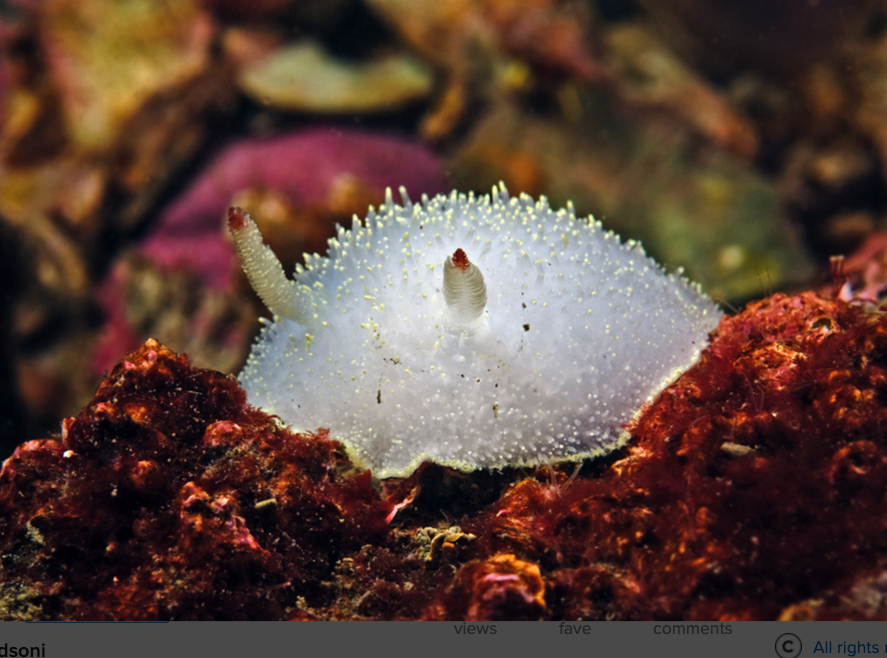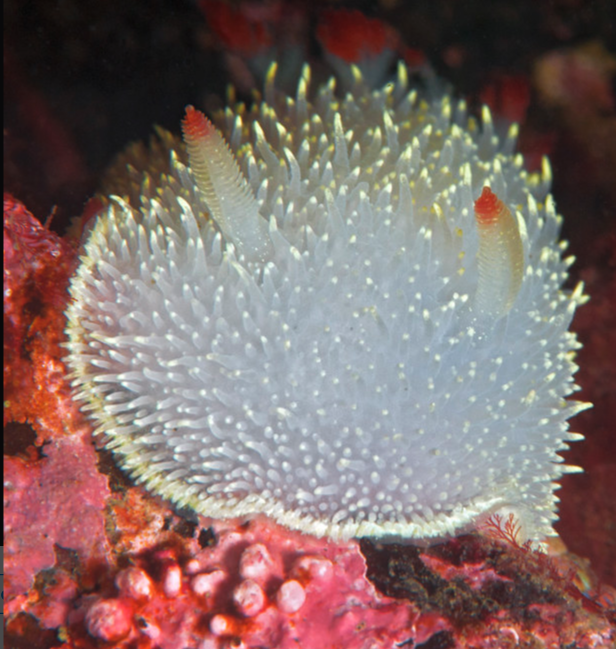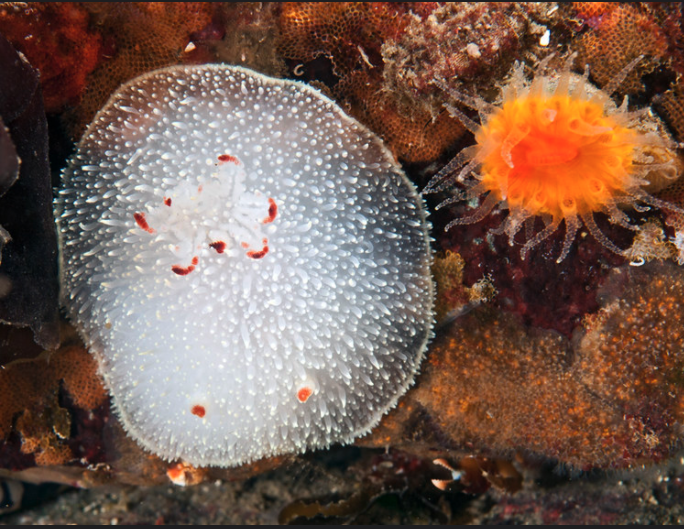General Description: Aconthodoris hudsoni is a typical representative of the Dorid Nudibranchs, which are also often referred to as sea slugs. Nudibranchs are sea snails that lack a shell and can vary greatly in coloration and form. That is why they are known as one of the most beautiful marine animals. Acanthodoris hudsoni can be easily identified by its transparent whitish body and the yellow stripe running at the edge of its mantle. Its body is covered with conical pipalae, which are also tipped yellow. As most nudibranchs, Aconthodoris hudsoni has two long tentacles (called rhinophores) which are used as sensory organs for searching for food or a partner. |
Distribution:
Sea slugs occupy the benthic zone. They usually live in the lower intertidal zone and could be found up to 700m in depth.
The dorid nudibranchs (over 3000 species) are widely spread throughout the world. Aconthodoris hudsoni, however, could be found only on the Pacific coast of North America.
Size: 1.5 to 2 cm
Feeding:
Dorid nudibranchs feed on a wide variety of organisms: anemones, corals, hydroids, sponges, etc. However, they are highly specialized in their feeding habits. Some nudibranchs can eat only one specific genus or even species! Presently, it is not known what is the exact diet of Acanthodoris hudsoni, but biologists believe that it should be similar to the one of the other members of the genus Acanthodoris – bryozoans.
Reproduction:
Sea slugs are hermaphrodites. Usually, they lay their eggs nearby a food source. The incubation period lasts for about 50 days, but can range in accordance to the abiotic factors in the environment. Nudibranchs go through a larval stage and when conditions are favourable, they metamorphose into young adults. This helps them distribute to larger areas.
Biotic Associations:
Although the dorid nudibranchs would be usually found on top of rocks, sometimes they live on other organisms, such as corals, seaweeds, and sponges, and exhibit parasitic relationships.
Go to: Student Research: Shade Preference in Sub-tidal populations of Dorid Nudibranchs
References:
Behrens, David. Pacific Coast Nudibranchs. Sea Challengers: Monterrey, 1991. p48.
Other Members of the Phylum Mollusca at Race Rocks.
and Image File |
 The Race Rocks taxonomy is a collaborative venture originally started with the Biology and Environmental Systems students of Lester Pearson College UWC. It now also has contributions added by Faculty, Staff, Volunteers and Observers on the remote control webcams. The Race Rocks taxonomy is a collaborative venture originally started with the Biology and Environmental Systems students of Lester Pearson College UWC. It now also has contributions added by Faculty, Staff, Volunteers and Observers on the remote control webcams.
|


